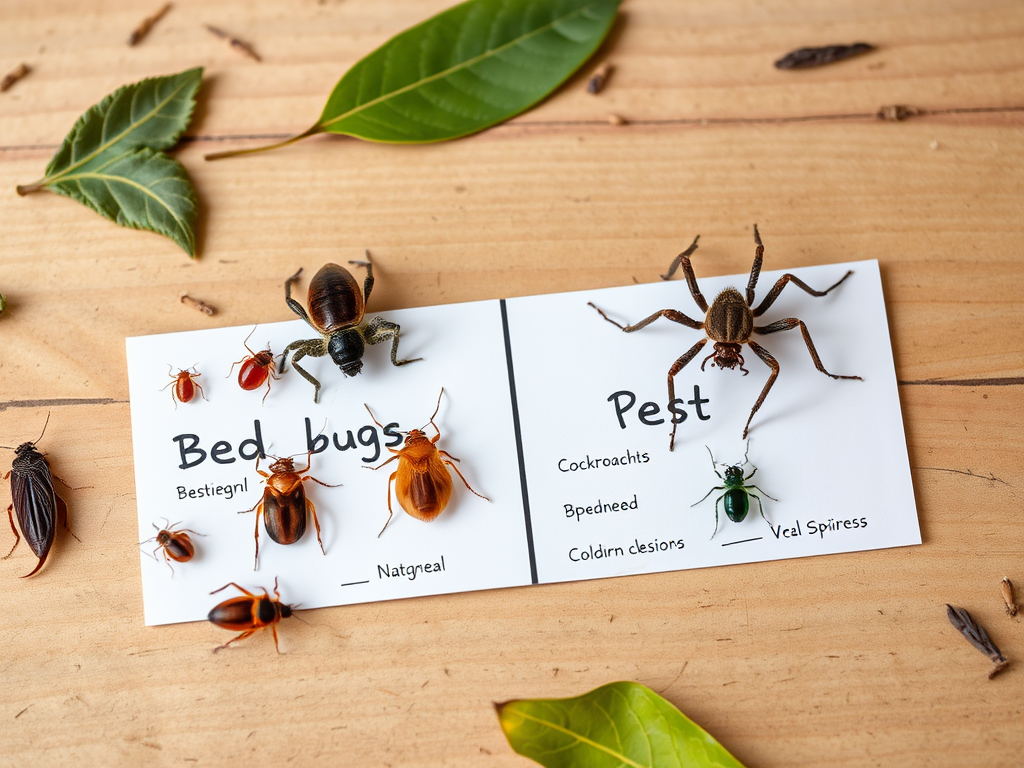Identifying pests in your home can sometimes feel like being in an episode of a mystery show, where the villain could be lurking just out of view. Bed bugs, the notorious bloodsucking nuisances, are often the prime suspects in cases of itching bites and sleepless nights. However, it’s crucial not to jump to conclusions. A host of other bugs may infiltrate your living space, leading to confusion. This article digs into common household insects that are frequently mistaken for bed bugs and provides you with essential tips on how to accurately identify them. Understanding these differences can save you time, money, and stress when it comes to pest control.
Bed bugs are notorious for their ability to hide in the seams of mattresses and along headboards, causing sleep disruptions and allergic reactions. They thrive in areas where humans sleep or rest and are often resistant to many common pest-control methods. To effectively tackle a bug infestation, one must distinguish between bed bugs and other pests that could be mistaken for them. Below, we explore various insects that share similarities with bed bugs, alongside helpful identification tips that will empower you to take action.
Overview of Bed Bugs

Bed bugs, scientifically known as Cimex lectularius, are small, flat, and oval in shape, reaching up to 5-7 millimeters in length. Their coloration ranges from brown to reddish-brown, often making them blend perfectly with their surroundings. Bed bugs are not only a nuisance; they can also leave itchy welts and lead to secondary infections. Active primarily at night, these pests feed on the blood of sleeping humans and can reproduce rapidly. Learning to identify bed bugs is essential in preventing an infestation from spiraling out of control. Early detection, alongside effective control measures, is key to a peaceful night’s sleep.
Common Bugs Mistaken for Bed Bugs

Fleas
Fleas are quick and agile pests often found in homes with pets. Smaller than bed bugs, they typically measure around 1 to 3 millimeters. Fleas have a unique jumping ability that enables them to leap several inches, which bed bugs cannot do. Their bite patterns differ; they usually affect pets more than humans, causing irritation particularly around the ankles. In some cases, humans may experience bites that resemble those from bed bugs, contributing to the confusion. Being aware of flea characteristics will sharpen your identification skills.
- Size: 1-3 millimeters
- Color: Dark brown to black
- Common Signs: Flea dirt and itching, especially on pets
Carpet Beetles
Carpet beetles, often found in closets and areas with natural fibers, can easily be mistaken for bed bugs due to their color and size. They can range from black to various patterned shades and are generally round or oval-shaped. Unlike bed bugs, they are not blood feeders and, thus, do not bite humans. Look for their larvae, which tend to create tiny holes in clothing or upholstery. Identifying these signs is pivotal to prevent costly damage to fabrics. When you notice any signs of infestation, acting fast will help safeguard your belongings.
| Characteristic | Bed Bugs | Fleas | Carpet Beetles |
|---|---|---|---|
| Size | 5-7 mm | 1-3 mm | 2-4 mm |
| Feeding Habit | Blood feeder | Blood feeder | Fabric feeder |
| Sign of Infestation | Itchy welts | Flea dirt in pet bedding | Tiny holes in fabric |
Cockroaches
Cockroaches are commonly found in households and can confuse many due to their dark appearance. Unlike bed bugs, these insects are significantly larger, measuring between 1 to 4 inches. They tend to scatter quickly when exposed to light, making them stand out more than bed bugs. Cockroaches are known for their distinct odor and can leave droppings that look like ground coffee. It’s essential to familiarize yourself with the characteristics of cockroaches if you suspect this pest instead of bed bugs. The key lies in recognizing their differing signs and behavior.
Spiders
While spiders aren’t classified as insects, they can often confuse the untrained eye due to their similar body shape. Spiders have eight legs, unlike bed bugs, which have six. Additionally, they usually weave webs, while bed bugs do not. The black widow and brown recluse can sometimes be misidentified, particularly if viewed in low light. Understanding the distinguishing physical factors, such as leg count and web presence, can help eliminate the guesswork in identifying these pests. Spiders can sometimes be beneficial, helping control other pest populations around your home.
Conclusion
Being able to discern bed bugs from other common household pests is crucial for efficient pest management. Recognizing the range of bugs that can mimic the appearance or behavior of bed bugs will save time and resources in combating infestations. Armed with this knowledge, homeowners can confidently inspect their environments, identify pest issues promptly, and decide on effective treatments. This understanding ultimately contributes to better health and comfort at home.
Frequently Asked Questions
- What do bed bugs look like? Bed bugs are small, flat, oval-shaped insects, typically brown or reddish-brown, and can grow up to 5-7 millimeters long.
- Are bed bugs harmful? While bed bugs do not transmit diseases, their bites can lead to discomfort, itching, and secondary infections due to excessive scratching.
- How can I know if I have a bed bug problem? Look for signs like itchy bites on your skin, dark spots on bedding (bed bug excrement), and live insects.
- Can I get rid of bed bugs on my own? While DIY methods may help, professional pest control services are often the most effective way to ensure complete elimination.
- How do I prevent bed bugs? Regularly inspect your living spaces, reduce clutter, and be cautious when traveling by checking hotel rooms and luggage for signs of bed bugs.